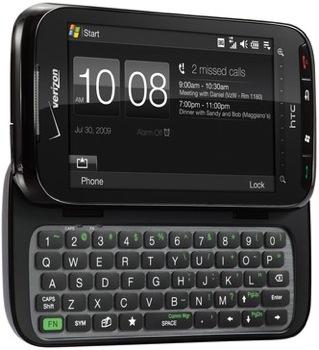
This weekend, I decided to take a trip away from the city and into the higher elevations for a weekend getaway. I wanted to visit with my family, and while there, to check out the scenery that the region is known for around this time. Though I brought my various personal wireless lines with me, my primary provider doesn't get service in the area. Immediately realizing the opportunity for a real-life test, I charged the Verizon HTC Touch Pro2, intent on spending the weekend with it.
Three days later, my verdict of using the device as my only form of communication? From a software perspective, not as bad as I thought, and from a hardware stance, near perfect. Windows Mobile has always seemed slightly "clunky" to me, and using it and re-acquainting myself for several days didn't change my tune (note: I've owned at least one device running every major OS to date, so I know Windows Mobile well). Yes, as time goes on, shortcuts are remembered and it does get easier, but despite that, I found certain tasks to be cumbersome.
The Verizon Touch Pro2 is my favorite variant of the popular phone, primarily because of the overall design. Though it's slightly modified from the European look (which I've gone on record several times to say is my favorite), I find it to be the best combination between the five designs (European, Verizon, AT&T, Sprint, and T-Mobile). The black faceplate looks good, and I think the battery cover is the most appealing of the bunch. Of course, with any design variations, the "different strokes for different folks" rule applies, but I think it does a good job of bridging the gap between all demographics. Had AT&T opted to keep the dedicated number pad, it would be a close call between the two versions, but I (like many I've spoken to) simply use it too much to not have it there.
If I needed to purchase a Windows Mobile device, the Touch Pro2 would be my first choice. In fairness, a lot of it is HTC's TouchFLO interface and how it has morphed into a great "skin" over Windows Mobile 6.1, but the hardware is another winning factor. It offers a fantastic keyboard and a huge tilting touchscreen, complete with good battery life (I only charged the phone twice during the trip). What could be better?
At the core, it's a well-built smartphone. It feels like it can withstand day-to-day use, and still perform perfectly. Perhaps most importantly, it breaks what I feel is the traditional Windows Mobile smartphone form factor - relatively boring candybar QWERTY devices (think Motorola Q here). It's functional, and I would recommend it to many. What's more, it's selling off of the shelves. What additional proof do manufacturers need to see that these type of devices are in incredibly high demand?